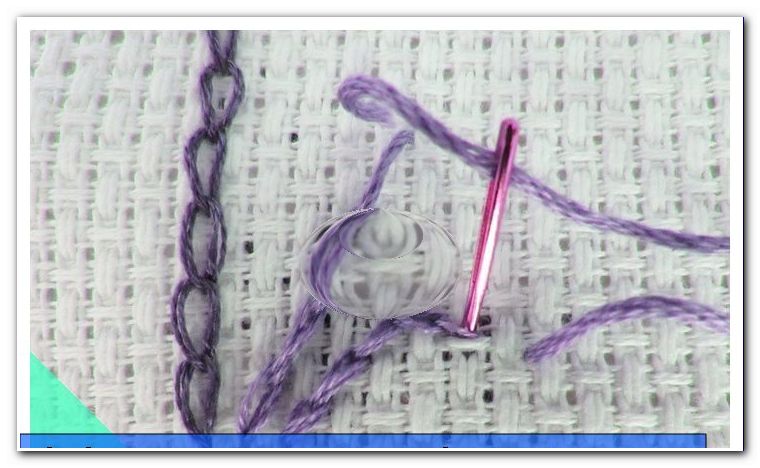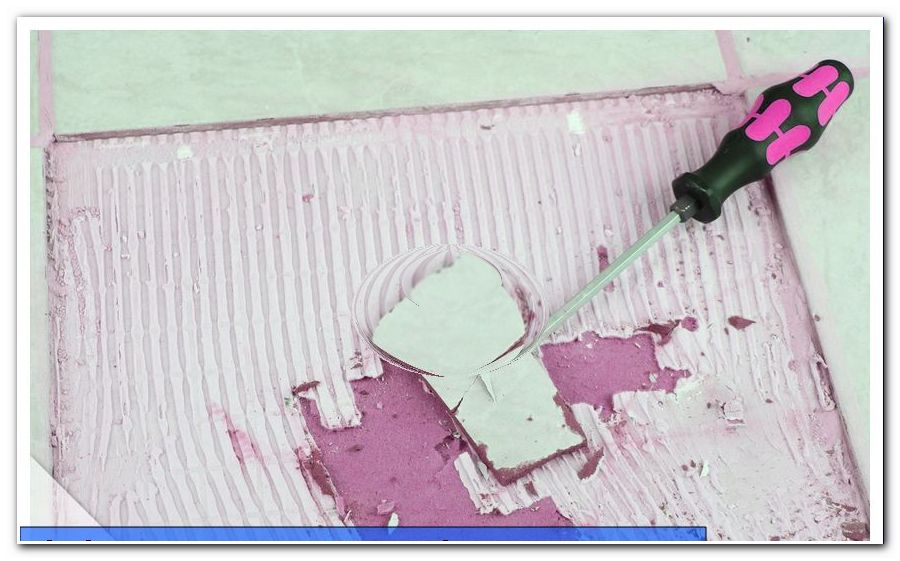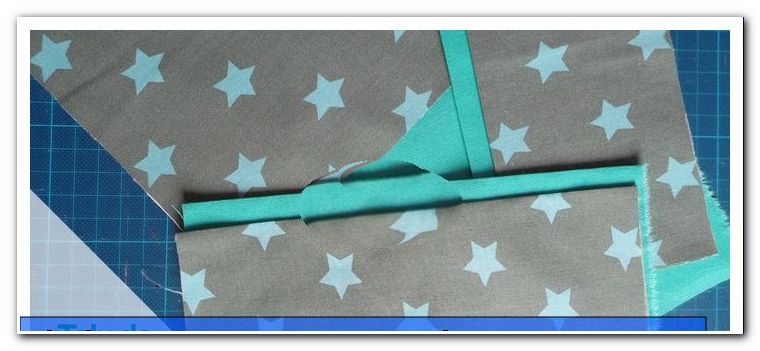Dishwasher does not dry properly - these could be the causes

- Possible causes
- 1. Multitabs
- 2. Switch to multitabs
- 3. New device
- 4. Dosage of the rinse aid
- 5. Program selection
- 6. Thermostat
- 7. heating element
- 8. fans
- 9. Valves clogged
- 10. dishes
- Related Links
The domestic dishwasher is a modern alternative to traditional manual rinsing. In addition to the effective cleaning of the dishes, saving time is one of the reasons why more and more people are switching to dishwashers. It is annoying, however, when the machine suddenly no longer dries properly and the dishes, although clean, but soaking wet come out of the dishwasher. Then something has to be done.
The dishwasher is an indispensable home appliance for families, culinary and people with little time. Dishwashers are more environmentally friendly than traditional dishwashing when properly loaded, but more thorough and time-saving. Even stubborn stains can be removed through the appropriate programs, which increases the benefits of the devices even more. Nevertheless, there are always this problem that the dishwasher does not dry the dishes properly. No matter how many times you run the program, the dishes get wet out of the machine and must first be dried. At the same time, unsightly water spots present themselves. The reasons can be different.
Possible causes
If the dishwasher no longer dries properly and you have to dry the dishes yourself despite your valuable time, this must not just be due to a defect in the machine. Often, improper use or even a mis-selected program is the trigger for too wet dishes. The following causes are typical:
1. Use of multitabs
2. Switch to multitabs
3. new dishwasher
4. Dosage of rinse aid
5. wrong program selection
6. Thermostat does not work
7. Heating element burned
8. Dry fan damaged
9. Clogged valves of the water bags
10. Material of the dishes
The individual causes relate not only to defects or damage, but also to the selection of cleaners and how the dishwasher is used. Therefore, you can use the list above to quickly check the individual reasons and get within a few moments to a suitable solution. As all problems can be solved quickly except for the defective components, you can do without manual drying again in the blink of an eye.
1. Multitabs
Multitabs are very often associated with problems in the dishwasher. They either do not dissolve completely, are incorrectly metered or clog the process because of their size. Another problem is their weak dosage of rinse aid. Rinse aid in the correct dosage is necessary so that the tension of the water surface can be reduced. This prevents the formation of water droplets and the water can easily run off. Since multitabs contain too little of this agent, drop formation is allowed accordingly. Use additional rinse aid to make up for the deficit by following the manufacturer's instructions on the packaging.
Tip: If you live in a region with hard water, you should also use dishwasher salt in addition to the multitabs and the additional rinse aid. This works effectively against limescale and thus reduces staining during drying.
2. Switch to multitabs
If you've switched to multitabs and your dishwasher does not dry properly anymore, it's probably because you own a new dishwasher with a water heater. If you have not had to replace your device for some time, you probably now own a model with instantaneous water heater. In contrast to the older models, these are not provided with a heating element in the washing compartment and therefore do not generate as much direct heat during drying. This leads to the problems mentioned above with normal multitabs and can be solved by the same solution as in point 1.

Note: If this symptom does not occur during the first time after switching to the multitabs, this is due to the remainder of the rinse aid being stored in the machine. The rinse aid thus ensures a short transitional period, in which the dishes are dried sufficiently and thus appears, the multitabs would work.
3. New device
This point is similar to point 2. If you have been using an older dishwasher model for an extended period of time, there is a high likelihood that it will still have the heater inside the unit. In new dishwashers a so-called instantaneous water heater can be found, which heats the entire interior evenly, but does not come to the same heat output as the models with a visible heating element. The result is poor dryer performance and wet dishes. Since this information is often overlooked when buying a new machine, many people continue to use the same tabs, resulting in poor drying performance. Proceed as in point 1.
4. Dosage of the rinse aid
As explained in point 1, the correct dosage of the rinse aid is essential for drying the dishes. The following effects occur at the wrong dosage:
- too little: dishes do not dry, water and limescale stains arise
- too much: streaks, unpleasant odors

Many modern dishwashers have adjustment options in the dosage during the rinse cycle (last rinse cycle). Thus, not too much of the means is used, but not too little. How to change the dosage is either stated in the instructions for use of your machine or you simply use the rinse aid compartment that should be on each machine. This is located in the dishwasher next to the compartment for the tabs and is marked with the symbol for the rinse aid:

Fill it in there. Often there is also a controller that can be set for the dosage. Since the rinse compartment keeps the rinse aid in the machine until it is used, you just have to readjust the regulator after each rinse to avoid white stains or wet dishes in the future. The rinse aid is refilled when the associated signal light flashes.

5. Program selection
Of course, even a wrong program can lead to wet dishes. If, for example, you have chosen a short program for washing dishes after Christmas, the dishes will not be dry, not even clean. Therefore, decide on a suitable program before switching on the dishwasher. In the instruction manual of your dishwasher, the appropriate programs for different amounts of dishes and their degree of contamination can be read out.
6. Thermostat
Some units have an additional thermostat next to the dishwasher sensors and measure the temperature to optimize the amount of water and heat. The thermostat is an essential part to effectively perform the rinses without consuming too much energy to heat the water. If the thermostat is defective, the crockery will never dry and the energy consumption will increase as the regulation of the temperature does not work anymore. This also increases the water consumption, which leads to a higher environmental impact. Here only the replacement of the thermostat by a specialist is available as a solution.
7. heating element
If the heating element of the dishwasher is damaged or burned, it must also be replaced. Without the heating element, neither the water can be heated, nor the dishes can be dried afterwards. The dishwasher is only available for cold rinsing, which is not worth it for stubborn stains. A non-functioning heating element is especially noticeable if you stop your dishwasher during the wash cycle and carefully open the door. If steam does not escape from the machine, the heating element is damaged and must be replaced.
8. fans
Dry fans are an important component of many expensive dishwashers and are used for additional drying of dishes. They provide ventilation inside the machine, which increases the evaporation of water and thus provides for improved drying performance. The fan is inside the machine and can be damaged by a variety of things. The highest likelihood of a faulty fan is foreign matter, which may accumulate on machines of inferior quality and damage the blades. Here is also only a change by a specialist possible.
9. Valves clogged
The water pockets are devices in the dishwasher that help to dry the dishes. These are:
- filled with cold water
- are flat designed to cover a large area
- each sit on the sides of the machine
- ensure cool surfaces inside the dishwasher
- cold surfaces attract hot water, causing condensation to collect on the sides
- Condensation drains downwards
- Dishes are dry
The water tanks or tanks are controlled by a valve, which fills the necessary cool water and thus allows the collection of condensed water. If the valves are clogged or damaged, the condensation can not be collected and will drain down into the spout. This ensures wet dishes and extra work for you. Here it is advisable to replace the respective water pockets either completely, to clean or to clean the valves. It's best to have a specialist do it, otherwise you would have to open the back of the washing machine, which would require a neodymium magnet and other tools.
Tip: Drain or pipe cleaners are quite easy to use for cleaning the water bags. Simply pour these into the dishwasher and let the dishwasher rinse to the highest possible level, which will cause the tube cleaner to dissolve the blockage.
10. dishes
A decisive factor for a well-functioning dishwasher is not only the quality, but also the dishes to be washed. Have you ever noticed that especially dishes made of plastic and silicone always attracts drops of water like a magnet ">
- open the door after completing the program
- let the steam escape
- Place a fresh dish towel on the top dish in the machine
- close the door again
- wait until the dishwasher has cooled down
- the towel will now absorb the residual moisture
- No moisture collects on the plastic or silicone cutlery over the towel
- then hang up the cloth to dry
- remove your dishes

The advantage of this method lies in the simple design. You can easily use any cloth as long as it is small enough and does not fluff. Unlike plastic, glass, ceramics or metal do not collect residual water due to their high conductivity. Therefore, you can also increase the drying performance if you do not use plastic dishes. Nevertheless, the towel trick works effectively and is not dependent on the drying performance of the machine.
General safety instructions
For a dishwasher, pay special attention to the hot steam that accumulates inside the machine during a rinse cycle. Take a few steps back before opening the dishwasher so you do not get all the steam in your face. This can lead to scalding in extreme cases, which can be extremely unpleasant for the skin. Likewise, you should not touch the inner lining of metal, as it is hot due to the drying process and can cause burns on the skin. Handle the dishwasher with care when using it.
Related Links
- Connect the dishwasher
- Dishwasher stinks
- Dishwasher does not draw water
- Dishwasher does not pump
- Clean the dishwasher
- Dishwasher does not consume salt
- Salt indicator lights up permanently




